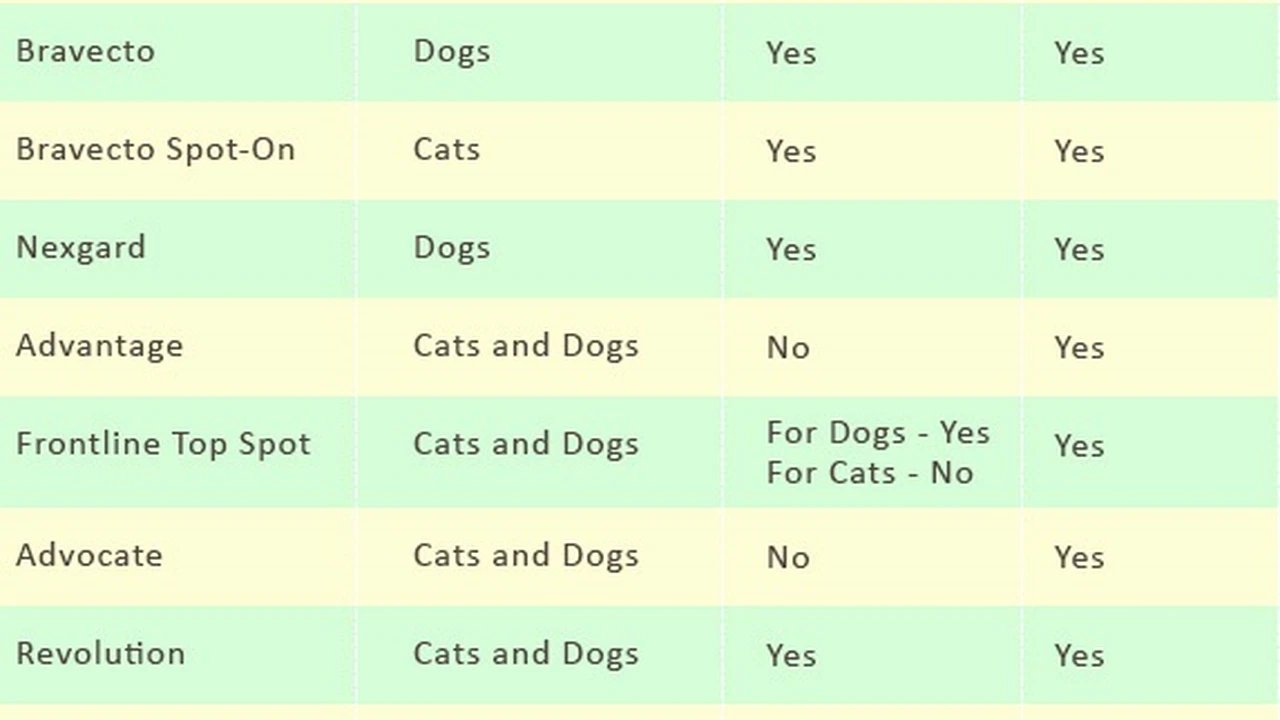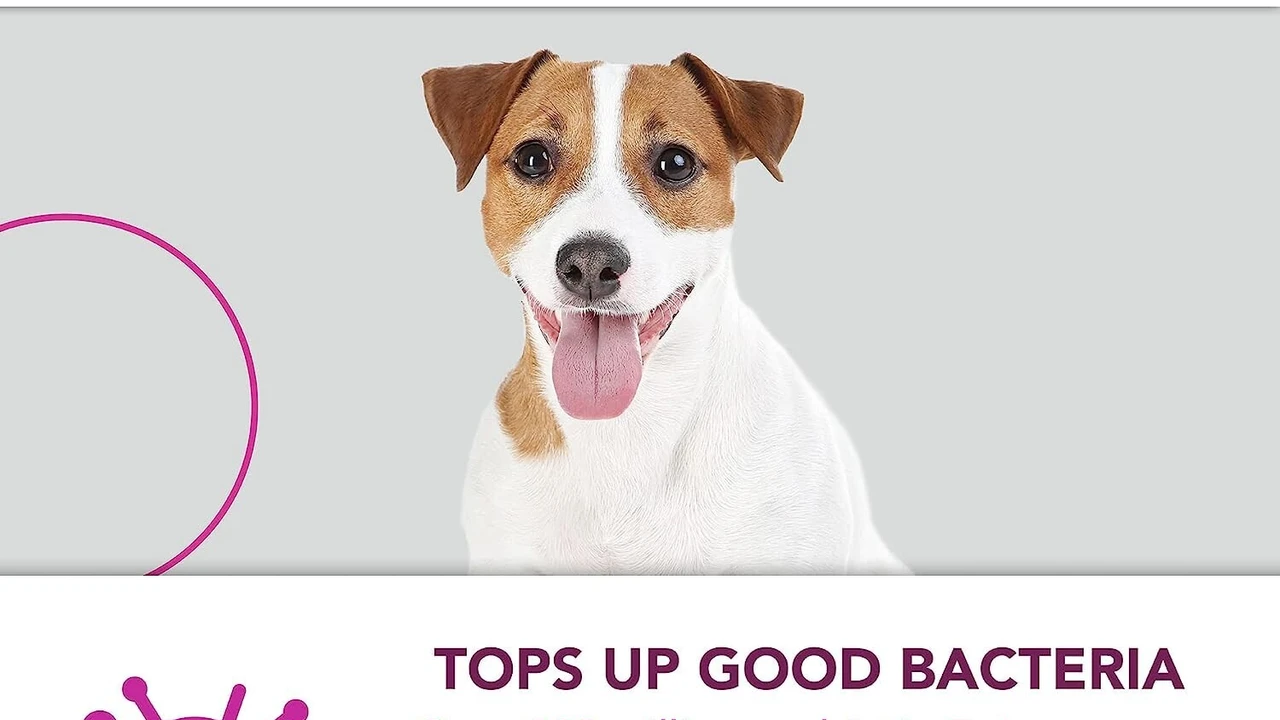Comparing Flea and Tick Prevention Products
Protect your pet from pests during holiday outdoor activities with our review of top prevention products.

Comparing Flea and Tick Prevention Products Your Ultimate Guide
Hey pet parents! The holidays are all about fun, family, and often, a lot of outdoor adventures with our furry friends. But with all that outdoor time comes an unwelcome guest: fleas and ticks. These tiny parasites aren't just annoying; they can transmit serious diseases to your beloved pet. So, keeping them protected is super important. Today, we're diving deep into the world of flea and tick prevention products. We'll compare different types, talk about their pros and cons, and even recommend some specific products to help you make the best choice for your pet and your lifestyle.
Understanding Flea and Tick Risks for Your Pet
Before we jump into prevention, let's quickly chat about why these pests are such a big deal. Fleas can cause intense itching, skin irritation, and even allergic reactions in pets. They can also lead to tapeworm infections if ingested. Ticks are even scarier, as they can transmit diseases like Lyme disease, Anaplasmosis, Ehrlichiosis, and Rocky Mountain Spotted Fever. These diseases can have serious, long-term health consequences for your pet, so prevention isn't just about comfort; it's about their overall health and well-being.
Types of Flea and Tick Prevention Products Exploring Your Options
There's a wide variety of flea and tick prevention products out there, and what works best for one pet might not be ideal for another. Let's break down the most common types:
Topical Spot Ons Easy Application Effective Protection
Topical spot-ons are liquid medications applied directly to your pet's skin, usually between the shoulder blades. The active ingredients spread over the skin and hair, or are absorbed into the bloodstream, killing fleas and ticks on contact or when they bite. They typically offer a month of protection.
Pros of Topical Spot Ons
- Easy to apply at home.
- Generally effective for a month.
- Many brands offer waterproof formulas.
Cons of Topical Spot Ons
- Can leave a greasy residue on the fur.
- Pets (and children) should avoid touching the application site until dry.
- Some pets may experience skin irritation at the application site.
Recommended Topical Spot On Products
Frontline Plus: This is a classic for a reason. It contains fipronil and (S)-methoprene, which kill adult fleas, flea eggs, larvae, and chewing lice, as well as ticks. It's waterproof after 24 hours. A 3-dose pack for a medium dog (23-44 lbs) typically costs around $45-$55. It's great for general outdoor use, especially if your pet enjoys swimming or getting wet.
K9 Advantix II: This product is for dogs only and contains imidacloprid, permethrin, and pyriproxyfen. It not only kills fleas and ticks but also repels mosquitoes, biting flies, and chewing lice. This repellent action is a huge plus, especially in areas with high mosquito populations. A 4-dose pack for a medium dog (21-55 lbs) is usually in the $60-$70 range. Ideal for dogs who spend a lot of time in wooded areas or near standing water.
Revolution Plus (for cats): For our feline friends, Revolution Plus is a fantastic option. It protects against fleas, ticks (black-legged, Gulf Coast, and American dog ticks), ear mites, roundworms, hookworms, and heartworm disease. It contains selamectin and sarolaner. A 3-dose pack for a cat (5.6-11 lbs) is typically $55-$65. This is a comprehensive choice for indoor/outdoor cats.
Oral Medications Chewable Convenience Systemic Protection
Oral medications are chewable tablets that your pet ingests. The active ingredients are absorbed into the bloodstream, killing fleas and ticks when they bite your pet. These are often preferred by owners who don't want topical residues or have pets with skin sensitivities.
Pros of Oral Medications
- No messy residue; safe to touch your pet immediately after administration.
- Not affected by bathing or swimming.
- Often very palatable, making administration easy.
Cons of Oral Medications
- Fleas and ticks must bite your pet to be killed.
- Some pets may experience gastrointestinal upset.
- Requires a prescription from a veterinarian.
Recommended Oral Medication Products
Bravecto: This is a popular choice because it offers 12 weeks of protection against fleas and ticks (black-legged tick, American dog tick, brown dog tick, and lone star tick) in a single chew. It contains fluralaner. A single chew for a medium dog (22-44 lbs) can cost around $60-$75. Perfect for busy pet owners who want long-lasting protection without frequent applications.
NexGard: NexGard provides monthly protection against fleas and ticks (black-legged tick, American dog tick, lone star tick, and brown dog tick). It contains afoxolaner and is a beef-flavored chew. A 3-dose pack for a medium dog (24.1-60 lbs) is typically $65-$75. Great for pets who need monthly dosing and enjoy a tasty treat.
Simparica Trio: This is a powerhouse, offering protection against fleas, five types of ticks (black-legged, Gulf Coast, American dog, lone star, and brown dog ticks), heartworm disease, and intestinal parasites (roundworms and hookworms). It contains sarolaner, moxidectin, and pyrantel. A 3-dose pack for a medium dog (22.1-44 lbs) is usually $75-$85. An excellent all-in-one solution for comprehensive parasite control.
Flea and Tick Collars Long Lasting Protection
Flea and tick collars release active ingredients that spread over your pet's skin and coat, or are absorbed into the bloodstream, to kill or repel pests. Some collars offer protection for several months.
Pros of Flea and Tick Collars
- Long-lasting protection, reducing the frequency of application.
- No oral administration or topical residue (for some types).
Cons of Flea and Tick Collars
- Can cause skin irritation around the neck.
- Some collars may not be effective over the entire body.
- Risk of getting caught on objects or ingested by pets/children.
Recommended Flea and Tick Collar Products
Seresto Flea and Tick Collar: This collar is a game-changer, offering 8 months of continuous protection against fleas and ticks for both dogs and cats. It uses a unique polymer matrix to slowly release imidacloprid and flumethrin. A Seresto collar for a large dog (over 18 lbs) is typically $65-$75. This is a fantastic option for consistent, long-term protection, especially for pets who are frequently outdoors.
Shampoos Dips and Sprays Immediate but Short Term Solutions
These products offer immediate relief by killing fleas and ticks on contact. However, their protective effects are short-lived, usually only lasting a few days to a week.
Pros of Shampoos Dips and Sprays
- Provide immediate kill of existing pests.
- Good for pets with heavy infestations.
Cons of Shampoos Dips and Sprays
- Short-lived protection, requiring frequent reapplication.
- Can be messy to apply.
- Some dips can be harsh and require careful handling.
Recommended Shampoo and Spray Products
Adams Plus Flea & Tick Shampoo: This shampoo contains pyrethrins, piperonyl butoxide, and (S)-methoprene to kill adult fleas, ticks, lice, flea eggs, and larvae. A 12 oz bottle is usually around $15-$20. Best used as an initial knockdown for an existing infestation, followed by a longer-term preventative.
Vet's Best Flea & Tick Home Spray: This plant-based spray uses essential oils like peppermint oil and eugenol to kill fleas, ticks, and mosquitoes on contact. It can be used directly on pets (over 12 weeks old) and around the home. A 32 oz bottle is typically $15-$25. Good for quick touch-ups or for pets with sensitivities to chemical treatments.
Factors to Consider When Choosing a Product Making the Right Decision
With so many options, how do you pick the right one? Here are some key factors to consider:
Your Pet's Species and Age Dog vs Cat Puppy vs Senior
This is crucial! Many dog products are toxic to cats, especially those containing permethrin. Always ensure the product is specifically labeled for your pet's species and age. Puppies and kittens often have different dosage requirements or may not be able to use certain products until they reach a certain age or weight.
Lifestyle and Exposure Level Outdoor Adventurer vs Couch Potato
Does your pet spend a lot of time outdoors, hiking in wooded areas, or playing in tall grass? Or are they mostly indoors with occasional walks? Pets with higher exposure levels might need more robust or repellent-based protection. For example, a dog that frequently goes camping might benefit from a product that also repels mosquitoes.
Existing Health Conditions and Sensitivities Allergies and Medications
If your pet has allergies, sensitive skin, or is on other medications, discuss prevention options with your vet. Some ingredients might interact with existing medications or exacerbate skin conditions. For example, pets with seizure disorders might need to avoid certain oral medications.
Ease of Administration and Your Comfort Level Pills or Topicals
Are you comfortable applying a topical liquid, or would you prefer a chewable tablet? If your pet is picky about pills, a palatable chew might be better. If they hate baths, a shampoo might be a struggle. Consider what's easiest for both you and your pet.
Cost and Budget Long Term Value
Prevention costs can add up, but remember that treating a flea or tick infestation, or a tick-borne disease, will be far more expensive and stressful. Compare the cost per dose or per month of protection. Sometimes a more expensive upfront product (like a 12-week chew or an 8-month collar) can be more cost-effective in the long run.
Geographic Location and Local Pest Prevalence Regional Risks
Flea and tick populations vary by region. Some areas have higher risks of certain tick-borne diseases. Talk to your veterinarian about the specific pests prevalent in your area and what they recommend for optimal protection.
Combining Prevention Strategies A Holistic Approach
While a good prevention product is your first line of defense, a holistic approach can offer even better protection:
Environmental Control Home and Yard Management
Treating your home and yard can significantly reduce flea and tick populations. Vacuum regularly, especially carpets and upholstery, and dispose of the vacuum bag outside. Consider using pet-safe yard treatments, especially in areas where your pet spends a lot of time. Keeping your lawn mowed and clearing brush can also help reduce tick habitats.
Regular Grooming and Inspections Daily Checks
After outdoor activities, especially in wooded or grassy areas, thoroughly check your pet for ticks. Pay close attention to areas like behind the ears, between the toes, in the armpits, and around the tail. If you find a tick, remove it carefully with tweezers, grasping it as close to the skin as possible and pulling straight up. Regular brushing can also help you spot fleas or flea dirt (tiny black specks that look like pepper).
Veterinary Consultations Professional Guidance
Your veterinarian is your best resource for personalized advice. They can recommend the most effective products for your pet based on their health, lifestyle, and your local pest risks. They can also advise on proper application techniques and potential side effects.
Common Misconceptions About Flea and Tick Prevention Debunking Myths
Let's clear up a few common misunderstandings:
Myth 1 Indoor Pets Dont Need Protection
Even indoor pets can get fleas and ticks! Pests can hitch a ride on humans, other pets, or even come in through open doors and windows. It's always safer to keep indoor pets protected, especially if they have any outdoor exposure at all.
Myth 2 Natural Remedies Are Always Safe and Effective
While some natural remedies might have repellent properties, they often aren't strong enough to provide reliable protection against heavy infestations or disease-carrying ticks. Some essential oils can even be toxic to pets if used improperly. Always consult your vet before using any natural remedies.
Myth 3 Once a Pet Has Fleas Theyre Gone Forever After Treatment
Flea infestations often require treating the pet AND the environment. Flea eggs, larvae, and pupae can live in your home for months. Consistent prevention is key to breaking the flea life cycle and preventing re-infestation.
The Importance of Year Round Prevention No Off Season for Pests
Many pet owners think flea and tick prevention is only necessary in warmer months. However, in many regions, fleas and ticks can survive year-round, especially with milder winters or in indoor environments. Consistent, year-round prevention is the most effective way to keep your pet safe and healthy.
Choosing the right flea and tick prevention product is a crucial part of responsible pet ownership. By understanding the different options, considering your pet's individual needs, and consulting with your veterinarian, you can ensure your furry friend stays happy, healthy, and pest-free, ready for all your holiday adventures and beyond!
:max_bytes(150000):strip_icc()/277019-baked-pork-chops-with-cream-of-mushroom-soup-DDMFS-beauty-4x3-BG-7505-5762b731cf30447d9cbbbbbf387beafa.jpg)





